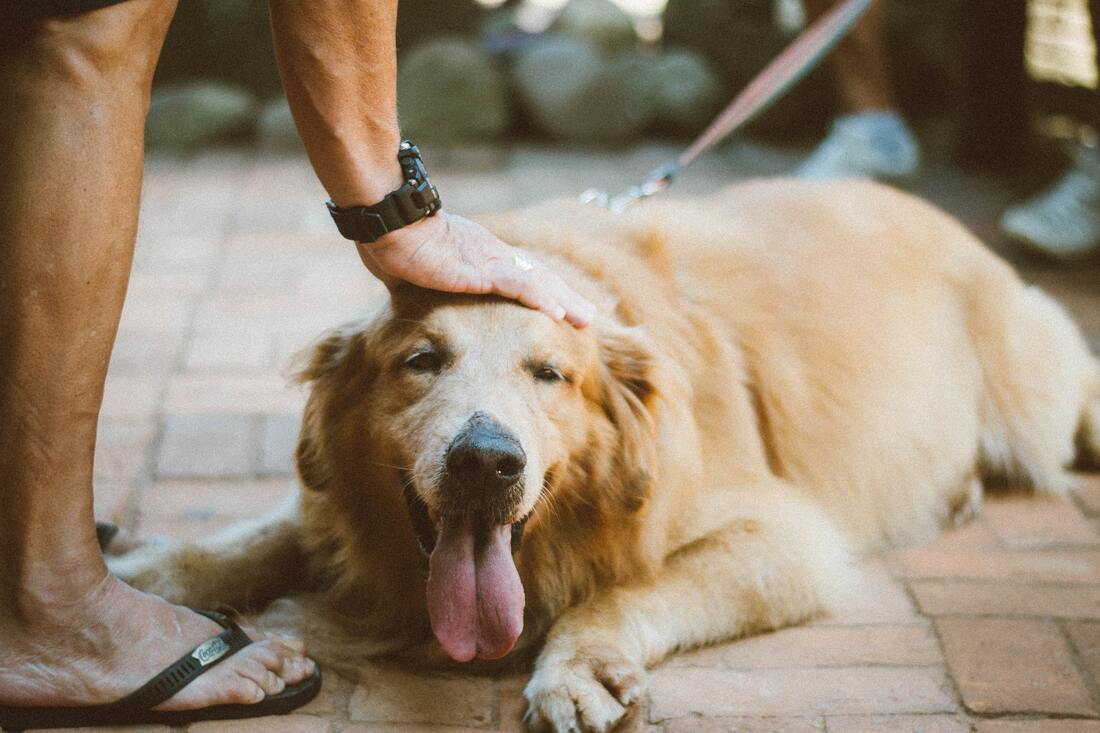|
For animal owners
Osteoarthritis (OA) is the most common form of arthritis found in dogs and is unfortunately extremely common. OA is a chronic joint disease that involves the loss of joint cartilage or new bone formation around the joint (also known as osteophytosis). This condition can be extremely debilitating for the dog and can be a painful condition which in some severe cases leads to limb disfunction. In this article, we give an overview of Canine Osteoarthritis. We explain in more detail what it is, what are the symptoms, and what treatments are available. What is Canine Osteoarthritis?
OA is commonly a secondary condition that is in part caused by another condition such as cranial cruciate ligament disease, hip dysplasia, or elbow dysplasia to name just a few. However, it is not always the case that OA is a result of another condition. In some cases, there is no obvious cause of OA apart from being the result of genetics, age, or other contributing factors such as the weight of the dog, the gender, the breed, the amount of exercise they get as well as their diet. What are the signs and symptoms? As it is such a common condition, dog owners want to understand the signs of symptoms of OA so that they can recognise the condition as early as possible. The main symptoms can include:
How is OA diagnosed? Several factors contribute towards the official diagnosis of Canine OA. It is usually based on a combination of the dog’s history in addition to a physical examination. The physical examination will be an opportunity to look at how the dog’s joints are affected. They will be looked at to see if the dog is showing any signs of pain in response to the joint movement. CT and MRI scans are commonly used as a diagnostic tool. MRIs can provide information about the structure of soft tissue such as the ligaments whilst CT scans are good for assessing any changes to the bone structure of the joints. This information is vital in understanding the problem areas. Xray's can also be recommended to see which joints are affected and to what degree and help rule out any other conditions that it could be that cause similar symptoms. What treatment is available for OA? Whilst there is no cure for Canine osteoarthritis, there are several different approaches available when it comes to treating and coping with the symptoms of OA. This depends on the dog in question as to which method will potentially be most effective. Weight management Controlling with the weight of the dog is a vital part of the treatment. As we discussed earlier in the article, some OA is a direct cause of the dog being overweight. The increased weight is added increased pressure and strain on the joints which can lead to them being in severe pain. Even if their weight wasn’t the cause of the problem, owners need to ensure their dog stays at a healthy weight to try and not make the pain any worse. Ideally, owners should be able to feel their dog’s ribs but not see them and from a bird’s eye view, their dog’s figure should be an hourglass figure. Rehabilitation Several forms of rehabilitation can be used solo or in combination, to improve joint mobility and increase muscle mass. This includes hydrotherapy (swimming or the use of an underwater treadmill), acupuncture, or laser therapy. Activity modification The type of exercise the dog is used to undertaking may need to be amended to stop their condition from worsening. If they are used to doing high-impact activities such as jumping or running, these may have to be limited as they can lead to inflammation of the joints and lead to a lot of pain. Instead of these intense exercises, low impact exercises that are more controlled such as lead walks can help build up muscle strength and stability. Pain medication and supplements NSAIDs- Non-steroidal anti-inflammatory drugs such as meloxicam, ketoprofen, etc are most commonly used when it comes to pain control of OA. Supplements may also be recommended by the veterinarian, depending on the patient. Omega 3 fatty acids or glucosamine sulfate are two common types that are often prescribed and may help alleviate OA pain in the joints. The role of supplements is to improve the function of the joints, reduce inflammation and help slow the progression of the joint damage over time. These medications not only promote healing, they can help increase water retention in the cartilage, which can help provide the joint with more cushioning. Surgery In some extreme cases, surgery may be the best treatment option. The surgery needed can vary from treatment for ligament rupture, or total joint replacement surgery which most commonly involves the hips or elbows for canine patients. Aftercare No matter what method of treatment is used, there will inevitably be a level of aftercare that owners need to be prepared for. OA is a progressive disease, so the main focus of the treatment methods above is to help the dog live comfortably for many years to come. These treatments will not make the condition disappear, but when administered correctly and treatment plans strictly adhered to, the treatments can be extremely effective at slowing down the speed at which OA progresses over time. Whilst canine Osteoarthritis is a common problem in dogs, it is never a pleasant condition to wish on any dog due to its painful and progressive nature. Whilst it is a painful condition, it is one that can be managed. If your dog is showing any of the symptoms described, it is important to consult a veterinarian as soon as possible. They will be able to diagnose the condition and work together with the owner and veterinarian physiotherapists to formulate the best possible care plan.
0 Comments
Your comment will be posted after it is approved.
Leave a Reply. |
AuthorNAVP Archives
June 2024
Categories
All
|
The Association |
Services |
|


 RSS Feed
RSS Feed